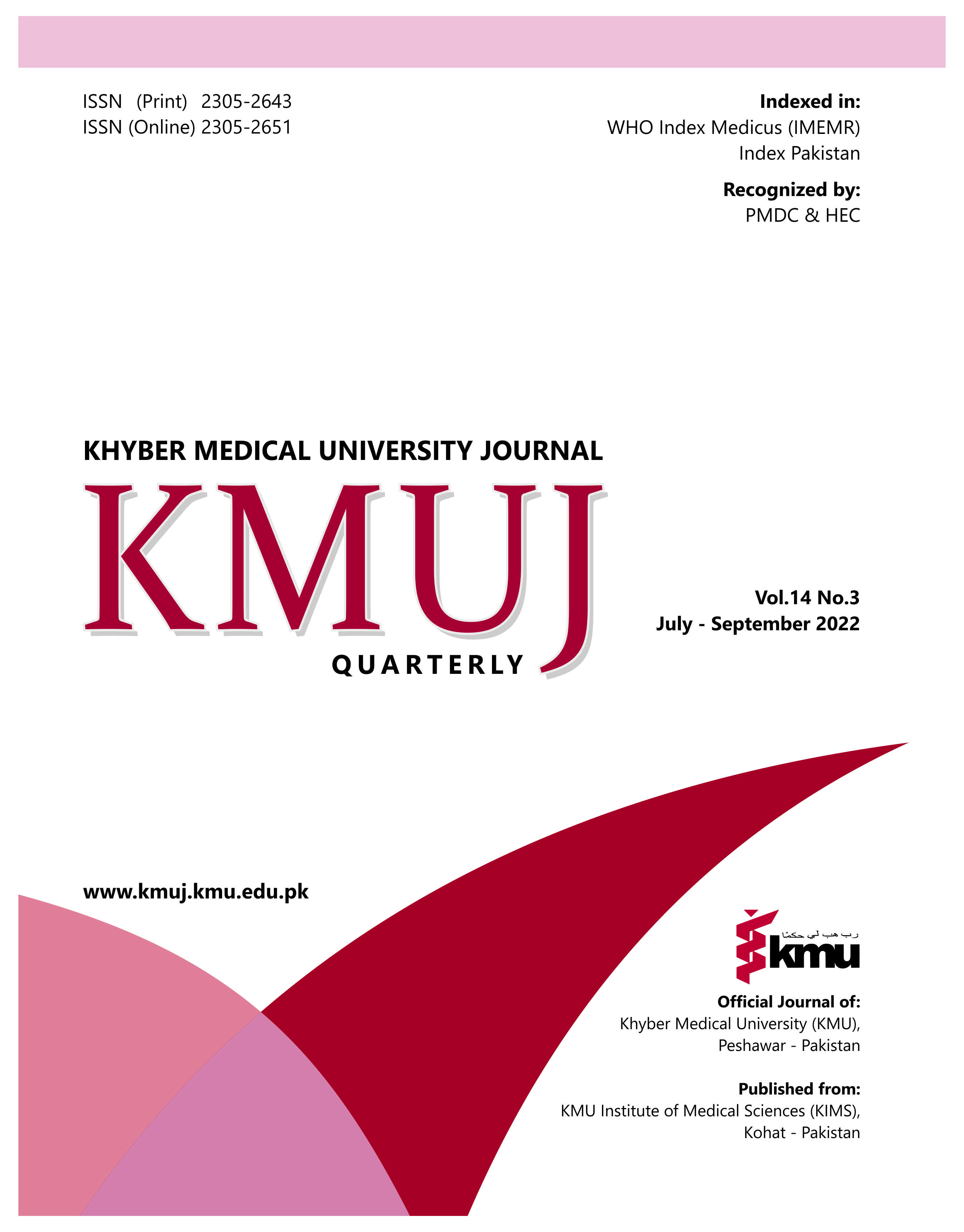MASS AND VOLUME CHANGES OF NOVEL CHLORHEXIDINE, POLYLYSINE, AND COMPOSITES BASED ON CALCIUM PHOSPHATE
Main Article Content
Abstract
OBJECTIVE: to determine how the mass and volume of experimental composites altered following immersion in distilled water (DW) and a simulated bodily fluid (SBF).
METHODS: The factors researched comprised the use of either adhesive monomer (4-methacryloyloxyethyl trimellitate anhydrite) or Chlorhexidine level, Calcium Phosphates (CalP) level, Polylysine level, and Hydroxy Ethyl Methacrylate (2-HEM) level. Circle plates of 10 mm in diameter and 1 mm in thickness were created. Gravimetric measurements of the mass and volume changes in DW and SBF were made.
RESULTS: The average mass increase was ~2-5% and ~1-4% in DW and SBF respectively. On adding CalP, the average increase was ~6, 3.5, and 2% with 20, 10, and 0wt% of reactive CalP fillers. The mass change with high levels of Polylysine, and chlorhexidine (5 wt%) was on average ~1% higher than with low levels (0.5, and 0wt% respectively). Mass changes with the use of hydrophilic monomer 2-HEM were ~0.5-1% greater than with the adhesive monomer. In comparison to SBF, 12% was the highest volume increase with 20 wt% CalP in DW. The ultimate volume changes for 10 wt% CalP in DW & SBF at 12 weeks was 7.5% and 5% respectively. Overall volume changes in DW and SBF with 0% by weight CalP were 4% and 2% respectively.
CONCLUSION: Mass and volume changes was highest in DW as compared to SBF, while the composites showed the potential to release over period of time. This will make the composites ideal for filling the gaps created because of polymerization shrinkage.
Article Details
Work published in KMUJ is licensed under a
Creative Commons Attribution 4.0 License
Authors are permitted and encouraged to post their work online (e.g., in institutional repositories or on their website) prior to and during the submission process, as it can lead to productive exchanges, as well as earlier and greater citation of published work.
(e.g., in institutional repositories or on their website) prior to and during the submission process, as it can lead to productive exchanges, as well as earlier and greater citation of published work.
References
Tsitrou E, Kelogrigoris S, Koulaouzidou E, Antoniades-Halvatjoglou M, Koliniotou-Koumpia E, van Noort R. Effect of Extraction Media and Storage Time on the Elution of Monomers from Four Contemporary Resin Composite Materials. Toxicol Int 2014;21(1):89-95. https://doi.org/10.4103/0971-6580.128811
Schneider LFJ, Cavalcante LM, Silikas N. Shrinkage Stresses Generated during Resin-Composite Applications: A Review. J Dent Biomech 2010;2010:131630. https://doi.org/10.4061/2010/131630
Zalkind MM, Keisar O, Everhadani P, Grinberg R, Sela MN. Accumulation of Streptococcus mutans on Light‐Cured Composites and Amalgam: An In Vitro Study. J Esthet Dent 1998;10(4):187-90. https://doi.org/10.1111/j.1708-8240.1998.tb00356.x
Beyth N, Domb AJ, Weiss EI. An in vitro quantitative antibacterial analysis of amalgam and composite resins. J Dent 2007;35(3):201-6. https://doi.org/10.1016/j.jdent.2006.07.009
Versluis A, Tantbirojn D, Lee MS, Tu LS, DeLong R. Can hygroscopic expansion compensate polymerization shrinkage? Part I. Deformation of restored teeth. Dent Mater 2011;27(2):126-33. https://doi.org/10.1016/j.dental.2010.09.007
Watts D, Kisumbi B, Toworfe G. Dimensional changes of resin/ionomer restoratives in aqueous and neutral media. Dent Mater 2000;16(2):89-96. https://doi.org/10.1016/s0109-5641(99)00098-6
Van Dijken JW. Three-year performance of a calcium-, fluoride-, and hydroxyl-ions-releasing resin composite. Acta Odontol Scand 2002;60(3):155-9. https://doi.org/10.1080/000163502753740179
Ito S, Hashimoto M, Wadgaonkar B, Svizero N, Carvalho RM, Yiu C, et al. Effects of resin hydrophilicity on water sorption and changes in modulus of elasticity. Biomaterials 2005;26(33):6449-59. https://doi.org/10.1016/j.biomaterials.2005.04.052
Sideridou I, Tserki V, Papanastasiou G. Study of water sorption, solubility and modulus of elasticity of light-cured dimethacrylate-based dental resins. Biomaterials 2003;24(4):655-65. https://doi.org/10.1016/s0142-9612(02)00380-0
Hegde MN, BHAT GT, NAGESH S. “Release of monomers from dental composite materials”-An In Vitro Study. Int J Pharm Pharmaceut Sci 2012;4(3):500-4.
Bakopoulou A, Papadopoulos T, Garefis P. Molecular toxicology of substances released from resin–based dental restorative materials. Int J Mol Sci 2009;10(9):3861-99. https://doi.org/10.3390/ijms10093861
Han SO, Drzal LT. Water absorption effects on hydrophilic polymer matrix of carboxyl functionalized glucose resin and epoxy resin. Eur Polym J 2003;39(9):1791-9. https://doi.org/10.1016/S0014-3057(03)00099-5
Mehdawi I, Neel EAA, Valappil SP, Palmer G, Salih V, Pratten J, et al. Development of remineralizing, antibacterial dental materials. Acta Biomater 2009;5(7):2525-39. https://doi.org/10.1016/j.actbio.2009.03.030
Neel EAA, Palmer G, Knowles JC, Salih V, Young AM. Chemical, modulus and cell attachment studies of reactive calcium phosphate filler-containing fast photo-curing, surface-degrading, polymeric bone adhesives. Acta Biomater 2010;6(7):2695-703. https://doi.org/10.1016/j.actbio.2010.01.012
Yiu C, King N, Pashley D, Suh B, Carvalho R, Carrilho M, et al. Effect of resin hydrophilicity and water storage on resin strength. Biomaterials 2004;25(26):5789-96. https://doi.org/10.1016/j.biomaterials.2004.01.026
Gao C, Wan Y, Lei X, Qu J, Yan T, Dai K. Polylysine coated bacterial cellulose nanofibers as novel templates for bone-like apatite deposition. Cellulose 2011;18(6):1555-61. https://doi.org/10.1007/s10570-011-9571-6
Parolia A, Adhauliya N, de Moraes PIC, Mala K. A Comparative Evaluation of Microleakage around Class V Cavities Restored with Different Tooth Colored Restorative Materials. Oral Health Dent Manag 2014;13(1):120-6.
